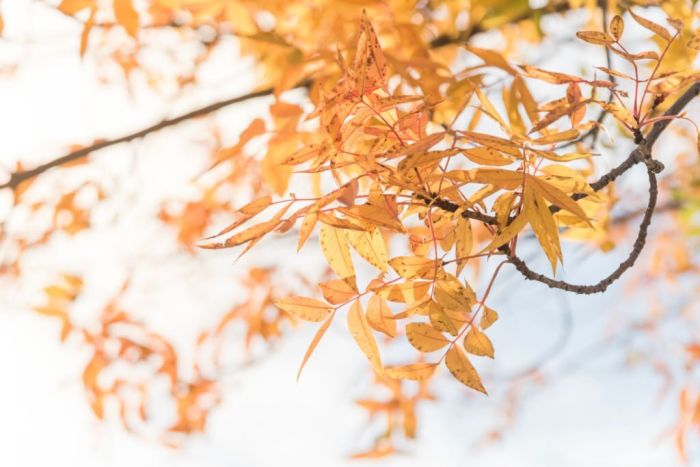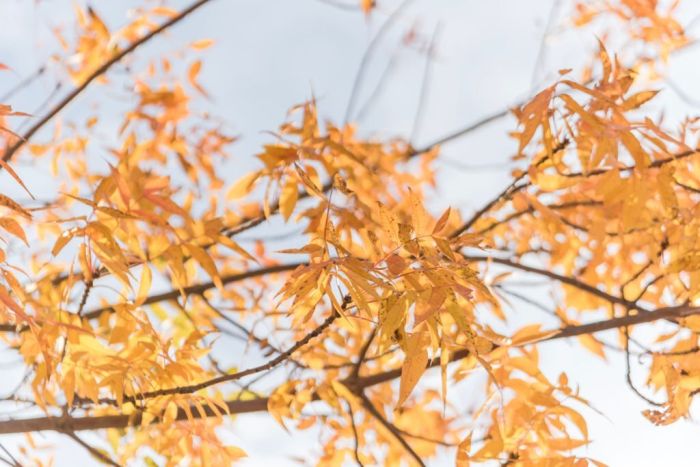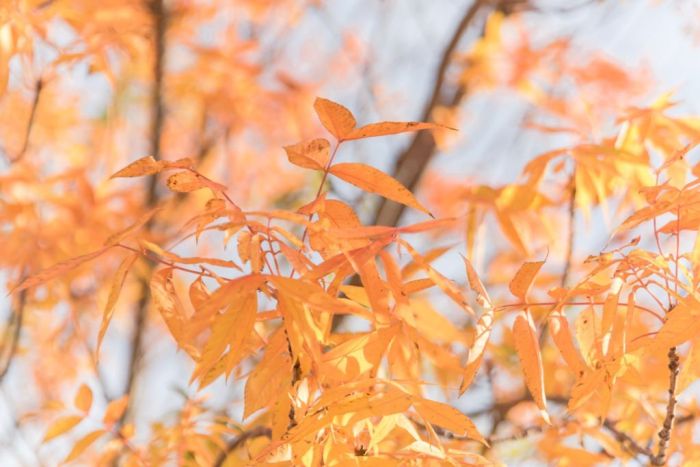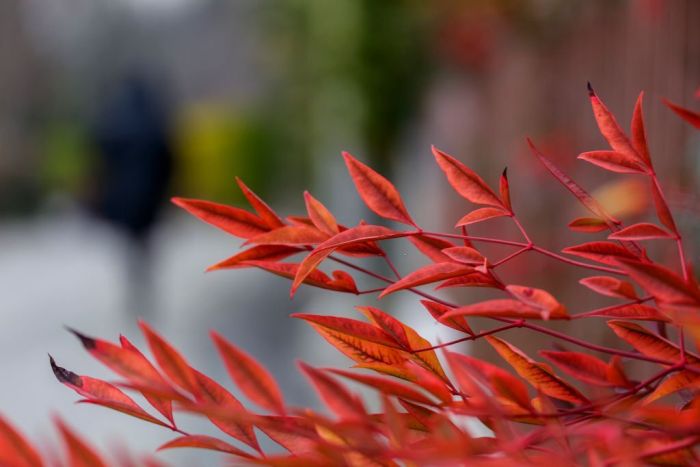The Red Push Pistache is a medium-sized, deciduous tree that has a hybrid origin between the Pistacia Atlantica and Pistacia Integerrima. The two trees are native to Asia, but the Red Push Pistache can be found in the southeastern part of the United States, Mexico, and Central America as well.
The Red Push Pistache grows in full sun and well drained soil, it is known for its ability to grow in desert heat, but it also can withstand temperatures as low as -17 degrees. It’s the perfect tree for your yard if you’re looking for something that has a beautiful shape, and will bring color to your landscape year-round.
It can grow to about 25 to 40 feet tall and 20 to 40 feet wide. The leaves of this tree are reddish when they first come out, but they turn dark green as they mature. This pattern gives it an extra dose of whimsical charm in addition to its already impressive list of attributes!
This tree is also dioecious which means that there are male and female trees.
The growth rate of this tree is slow to moderate depending on the amount of sunlight it receives, soil type and watering schedule.
Red Push Pistache Pros
Brilliant fall color
Red Push Pistache trees are beautiful in the fall, with their yellow, orange, and red leaves. The colors of fall leaves depend on how quickly the cold temperatures come and stay. In areas where the temperature drops slowly, the leaves will turn yellow, whereas an area where the temperature drops quickly will have orange or red leaves.
Superb shade tree
The Red Push Pistache is one of the most popular shade trees in towns and cities. It can grow to be up to 25 feet tall, with a 20-foot spread, making it a fantastic choice for large yards or public parks where its dense canopy provide shade from the sun and make the area more comfortable to walk through in the summer months. This makes it an ideal choice for areas that are known to have high temperatures during the summer months.
Excellent for streetscape
Red Push Pistache is an excellent street tree for people who love the aesthetic of growing trees in their streets. Its beautiful fall color and attractive form make it an excellent ornamental tree that adds a gorgeous seasonal touch to any landscape.
High Drought Tolerance
The Red Push Pistache tree is a very high drought tolerant tree. This means that once it has been established, it will not need much water. It can survive on infrequent deep waterings making it a great choice for areas where water is scarce.
Heat Tolerant
The Red Push Pistache tree is extremely heat tolerant, which makes it a good choice for desert like climates. It is also able to withstand drought conditions, and can even thrive in sandy soil. The red push pistache tree is one of the few trees that can be grown in full sun without having to worry about the leaves being burned by the sun’s rays.
Cold Tolerant
The Red Push Pistache tree is a truly amazing tree that has many qualities. This tree is not only heat tolerant, but also cold tolerant. This deciduous tree can tolerate temperatures as low as -17 ° C .This means that it can grow in a variety of climates, which makes it an excellent choice for landscaping.
Non alleregenic
Red Push Pistache tree is a non alleregenic tree, which means it will not release any pollen into the air. This is great for people who suffer from allergies and other respiratory conditions, as well as for those who just don’t want to deal with pollen all over their yard.
Windbreak & Privacy
Red Push Pistache is an excellent windbreak, especially in areas where strong winds can be a problem. It has a dense canopy that serves as a good windbreak and provides privacy in the garden or yard.
Windbreaks can help keep homes warm during the colder months by blocking unwanted winds from entering the home and reducing drafts in a room.
Privacy is also an important factor when it comes to a homeowner’s choice of landscaping plants or trees that they want to plant around their home. The Red Pistache tree has a round dense canopy which provides excellent privacy during winter and summer months alike.
Adapts in poor soils
The Red Push Pistache tree is a great option for those who are looking for a tree that can adapt to poor soils, all it needs is a well-drained soil.
These trees are known for their ability to grow in dry soils, which makes them perfect for urban areas. The Red Push Pistache also does not require much water or fertilizer to keep it healthy, which makes it an excellent choice for those without much space or who don’t want to spend a lot of money on maintenance.
Red Push Pistache Cons
Pruning
Pruning is a very important part of keeping your tree healthy and happy. The Red Push Pistache is no exception. It needs well-planned pruning when the tree is young to ensure the development of a strong and healthy crown and maintain a compact canopy with good light penetration into the crown of the tree.
Slow Growth Rate
The Red Push Pistache tree is not a fast grower. It grows at a moderate to slow rate and can take up to 5-7 years to reach full maturity. This isn’t necessarily a bad thing, as the tree is very easy to maintain and doesn’t need a lot of work in order to thrive.
Conclusion
It’s easy to see why the red push pistache tree is a great addition to any garden. The red color of its leaves is a beautiful accent to any landscape, and the tree’s ornamental features are awe-inspiring. From the beginning of spring to late fall, it’s a pleasure to look at.
The pros of planting red push pistache trees far outweigh the cons. They’re easy to grow and maintain, so you don’t have to worry about them being a burden.
In conclusion, we hope you’ve enjoyed learning about red push pistaches! There’s no doubt that this tree has many uses, both decorative and practical. We hope that you’ll consider planting one in your yard or garden soon!
Also Read: Chinese Pistache Tree Pros And Cons

